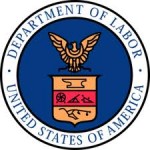- Home
- News
- Features
- Topics
- Labor
- Management
- Opinions/Blogs
- Tools & Resources
Home » Archives by category » News (Page 3)
US Department of Labor sues Austin luxury car dealer that retaliated against employee who raised concerns of coronavirus hazards
13/10/2021 Comments Off on US Department of Labor sues Austin luxury car dealer that retaliated against employee who raised concerns of coronavirus hazards
October 13, 2021US Department of Labor sues Austin luxury car dealer that retaliatedagainst employee who raised concerns of coronavirus hazardsHi Tech Motorcars LLC terminated employee for warning managers, coworkers
AUSTIN, TX – The U.S. Department of Labor has filed suit against an Austin luxury car dealer for terminating an employee who warned managers and other co-workers about potential coronavirus hazards in the workplace.
The action follows an investigation by the department’s Occupational Safety and Health Administration that found Hi Tech Motorcars LLC, Hi Tech Imports LLC and Hi Tech Luxury Imports LLC violated the Occupational Safety and Health Act when it retaliated against the worker in December 2020.
After learning a co-worker had tested positive for coronavirus, the employee requested that management notify other employees immediately of their risk of exposure. When management did not take action, the employee sent an email to all company employees about the potential hazards. Less than an hour later, the employer terminated the employee.
OSHA found the employee exercised their legal rights under section 11(c) of the OSH Act, and that the termination was illegal. In its filing in U.S. District Court for the Western District of Texas, Austin Division, the department seeks reinstatement, lost wages and benefits resulting from the termination, reimbursement for costs and expenses, compensatory damages, and exemplary or punitive damages.
“No worker should ever fear losing their job for raising workplace safety and health concerns,” said OSHA Regional Administrator Eric S. Harbin in Dallas. “OSHA’s investigation and U.S. Department of Labor’s action in this case show we will enforce these protections vigorously.”
“This employee acted out of real concern for their safety and that of their coworkers, and their actions are protected under federal law,” said Regional Solicitor of Labor John Rainwater in Dallas. “The law also protects whistleblowers from retaliation by their employer and holds employers accountable when they do.”
OSHA’s Whistleblower Protection Program enforces the whistleblower provisions of 25 whistleblower statutes protecting employees from retaliation for reporting violations of various workplace safety and health, airline, commercial motor carrier, consumer product, environmental, financial reform, food safety, health insurance reform, motor vehicle safety, nuclear, pipeline, public transportation agency, railroad, maritime, securities, tax, criminal antitrust, and anti-money laundering laws. For more information on whistleblower protections, visit OSHA’s Whistleblower Protection Programs webpage.
# # #
Editor’s note: The U.S. Department of Labor does not release the names of employees involved in whistleblower complaints.
Media Contacts:
Chauntra Rideaux, 972-850-4710, rideaux.chauntra.d@dol.govJuan J. Rodríguez, 972-850-4709, rodriguez.juan@dol.gov
Release Number: 21-1842-DAL
U.S. Department of Labor news materials are accessible at http://www.dol.gov. The department’s Reasonable Accommodation Resource Center converts departmental information and documents into alternative formats, which include Braille and large print. For alternative format requests, please contact the department at (202) 693-7828 (voice) or (800) 877-8339 (federal relay).
Continue reading …US Department of Labor, Mexican Consulate in Boston enter alliance to promote workplace safety, health among New England’s workers
13/10/2021 Comments Off on US Department of Labor, Mexican Consulate in Boston enter alliance to promote workplace safety, health among New England’s workers
October 13, 2021 US Department of Labor, Mexican Consulate in Boston enter alliance to promote workplace safety, health among New England’s workersProtection for workers in Maine, Massachusetts, New Hampshire, Rhode Island, Vermont
(L-R) Jeffrey Erskine, Acting Regional Administrator, OSHA Region 1, and Alberto Fierro, Consul General, Consulate General of Mexico in Boston, display the alliance.
BOSTON – The U.S. Department of Labor and the Consulate General of Mexico in Boston have signed an alliance to provide hazard prevention training and training on employees’ workplace safety and health rights to Mexican nationals and others working in New England. It will also educate them on how the Occupational Safety and Health Act and other U.S. laws protect their rights and hold employers responsible. The alliance covers workers in Massachusetts, Maine, New Hampshire, Rhode Island and Vermont.
Over the next two years, the department’s Occupational Safety and Health Administration and the consulate will develop and deliver information on recognizing and preventing workplace hazards to Mexican workers through public exhibits; speaking opportunities and appearances at conferences and local meetings; and participation in “Mobile Consulate” activities and events.
“Knowledge is an essential tool for workers. It protects them from workplace hazards and ensures they understand their rights. Our alliance with the Consulate General of Mexico establishes an ongoing process to provide that information to New England’s workers and employers,” said OSHA Acting Regional Administrator Jeffrey Erskine in Boston. “This effort also signals our commitment to making safety a priority in the lives of Mexican nationals and others working in Massachusetts, Maine, New Hampshire, Rhode Island and Vermont.”
A team of OSHA and Mexican Consulate representatives will develop a plan of action, determine working procedures, and identify participants’ roles and responsibilities. They will also meet at least three times per year to track and share information on progress toward achieving the alliance’s goals.
OSHA’s Alliance Program works with groups committed to worker safety and health to prevent workplace fatalities, injuries and illnesses. These groups include unions, consulates, trade or professional organizations, businesses, faith- and community-based organizations, and educational institutions. OSHA and the groups work together to develop compliance assistance tools and resources, share information with workers and employers, and educate workers and employers about their rights and responsibilities.
Learn more about OSHA.
Read the release in Español.
# # #
Media Contacts:
Ted Fitzgerald, 617-565-2075, fitzgerald.edmund@dol.govJames C. Lally, 617-565-2074, lally.james.c@dol.gov
Release Number: 21-1753-BOS
U.S. Department of Labor news materials are accessible at http://www.dol.gov. The department’s Reasonable Accommodation Resource Center converts departmental information and documents into alternative formats, which include Braille and large print. For alternative format requests, please contact the department at (202) 693-7828 (voice) or (800) 877-8339 (federal relay).
Continue reading …Vaccine hesitant New Yorkers consider leaving the city as mandates take effect
13/10/2021 Comments Off on Vaccine hesitant New Yorkers consider leaving the city as mandates take effectNew YorkVaccine hesitant New Yorkers consider leaving the city as mandates take effectFor some in the Bronx, the borough hit hardest by the coronavirus, mistrust may win out over jobs and even home Bahar OstadanWed 13 Oct 2021 06.00 EDTDeysia Padilla’s family thought she was at work. Instead, she spent last Thursday afternoon unloading a mound of orange and pink baby socks in a sunny South Bronx laundromat – one-by one, in all their three-inch glory. She had 48 hours to consider an impossible choice: either get vaccinated or lose her job.Padilla is one of thousands of unvaccinated New Yorkers affected by Mayor Bill de Blasio’s ultimatum last week. Not only do city employees face the reality of losing their jobs, but without a shot, they’ll even forgo unemployment payments. Some unvaccinated Bronx natives would rather pursue a life outside New York City than be forced to take the vaccine.“I feel like my dream is being shattered by the government,” said Padilla. “I’m being taken out of my home.” The 25-year-old mother had plans to become an art teacher one day. Now, she’s considering moving to Florida with her husband and three-month-old baby.A pandemic-induced population shift to Florida – sometimes called the city’s sixth borough – is already under way. As of March, more than 33,500 New Yorkers permanently relocated to Florida – up 32% from the same period in the previous year. Experts say people flocked south for looser Covid …
Continue reading …Carbon emissions ‘will drop just 40% by 2050 with countries’ current pledges’
12/10/2021 Comments Off on Carbon emissions ‘will drop just 40% by 2050 with countries’ current pledges’Cop26Carbon emissions ‘will drop just 40% by 2050 with countries’ current pledges’International Energy Agency says $4tn investment needed over decade to reach net zero target Rob Davies@ByRobDaviesWed 13 Oct 2021 00.00 EDTLast modified on Wed 13 Oct 2021 03.11 EDTCurrent plans to cut global carbon emissions will fall 60% short of their 2050 net zero target, the International Energy Agency has said, as it urged leaders to use the upcoming Cop26 climate conference to send an “unmistakable signal” with concrete policy plans.In its annual World Energy Outlook, redesigned this year as a “guidebook” for world leaders attending the summit in Glasgow, the IEA predicted that carbon emissions would decrease by just 40% by the middle of the century if countries stick to their climate pledges.The organisation said the difference between current plans and the change necessary to reach the net zero target was “stark”, requiring up to $4tn (£2.94tn) in investment over the next decade alone to bridge the divide.The IEA’s executive director Fatih Birol told the Guardian that major economies recovering from Covid-19 were already missing the opportunity to spur investment in clean energy.‘Overwhelming’ backing for strong climate action, UK study showsRead more“We are witnessing an unsustainable recovery from the pandemic,” he said, pointing to sections of the report that show coal use growing strongly, contributing to the second-largest increase in CO2 emissions in history.Birol called for developing economies in particular to make …
Continue reading …House passes bill to raise US debt ceiling through early December
12/10/2021 Comments Off on House passes bill to raise US debt ceiling through early DecemberUS CongressHouse passes bill to raise US debt ceiling through early DecemberLegislation raises government’s borrowing limit to $28.9tnHard-fought House vote passes entirely along party lines Guardian staff and agenciesTue 12 Oct 2021 19.57 EDTLast modified on Tue 12 Oct 2021 21.57 EDTThe US House of Representatives gave final approval on Tuesday to a Senate-passed bill temporarily raising the government’s borrowing limit to $28.9tn, putting off the risk of default at least until early December.Kamala Harris: European colonizers ‘ushered in wave of devastation for tribal nations’Read moreDemocrats, who narrowly control the House, maintained party discipline to pass the hard-fought, $480bn debt limit increase. The vote was along party lines, with every yes from Democrats and every no from Republicans.Joe Biden is expected to sign the measure into law this week, before 18 October, when the treasury department has estimated it would no longer be able to pay the nation’s debts without congressional action.Republicans insist Democrats should take responsibility for raising the debt limit because they want to spend trillions of dollars to expand social programs and tackle climate change. Democrats say the increased borrowing authority is needed largely to cover the cost of tax cuts and spending programs during Donald Trump’s administration, which House Republicans supported.House passage warded off concerns that the world’s largest economy would go into default for the first time, but only for about seven weeks, setting the stage for continued fighting …
Continue reading …‘The stakes couldn’t be higher’: GE urged to invest in green US jobs
12/10/2021 Comments Off on ‘The stakes couldn’t be higher’: GE urged to invest in green US jobsWorkers’ rights‘The stakes couldn’t be higher’: GE urged to invest in green US jobsLabor and environmental groups are demanding that General Electric stop offshoring jobs and invest in renewable energy Global development is supported byAbout this contentMichael SainatoTue 12 Oct 2021 05.00 EDTLast modified on Tue 12 Oct 2021 05.28 EDTKevin Smith, of Salem, Virginia, worked at General Electric for about 20 years before the town’s plant was shut down at the end of 2019, and the work moved to a factory in India.“It was a total shock because of how things had been going, with all the overtime we were working, everything just seemed great, like there was no way this was happening. All I wanted to do was wake up, that I had a nightmare, but that wasn’t the case,” said Smith, 50, who was one of about 265 GE workers who were laid off due to the closure.Because of his age – 48 at the time of the plant closure – Smith was denied a retirement pension. Other job prospects offered much lower pay and worse schedules – he is the father of two children – so he decided to return to school, through a program offered through Trade Adjustment Assistance. “When people started working at GE, for the most part they looked at it being their last job. That’s the way I looked at it,” said Smith, whose father had retired from the same GE plant …
Continue reading …Zellers returns — kind of — but the lowest price isn't quite the law
12/10/2021 Comments Off on Zellers returns — kind of — but the lowest price isn't quite the lawZellers returns as a pop-up inside an Ontario Hudson’s Bay store, months after parent company HBC saw the discount department store’s trademark removed from the government register.
Continue reading …Cement makers across world pledge large cut in emissions by 2030
11/10/2021 Comments Off on Cement makers across world pledge large cut in emissions by 2030Construction industryCement makers across world pledge large cut in emissions by 2030Industry responsible for about 8% of CO2 emissions commits to reaching net zero by 2050 without offsetting Fiona Harvey Environment correspondentTue 12 Oct 2021 02.00 EDTLast modified on Tue 12 Oct 2021 02.01 EDTCement makers around the world have pledged to cut their greenhouse gas emissions by up to a quarter this decade and reach net zero by 2050, in a move they said would make a major difference to the prospects for the Cop26 climate summit.The industry is responsible for about 7%-8% of global carbon dioxide emissions, the equivalent of more than any individual country except China and the US. Cutting emissions from cement production is difficult, because the chemical processes used to make it and concrete release CO2.The Global Cement and Concrete Association (GCCA), which represents 40 of the world’s biggest producers and about 80% of the industry outside China, made the pledge on Tuesday. Several major Chinese cement and concrete companies, which account for about 20% of China’s market, have also joined.Companies have been working for more than a decade on ways to change the chemical processes and use different materials, as well as becoming more energy efficient. Tuesday’s pledge marks the first time that major producers have made a public commitment on the climate.Thomas Guillot, the chief executive of the GCCA, said: “This is an important milestone – it’s a big thing. Concrete is the second …
Continue reading …India faces electricity crisis as coal supplies run critically low
11/10/2021 Comments Off on India faces electricity crisis as coal supplies run critically lowIndiaIndia faces electricity crisis as coal supplies run critically lowEight in 10 thermal power stations within days of running out as state blackouts spark protests Hannah Ellis-Petersen in DelhiMon 11 Oct 2021 21.27 EDTLast modified on Tue 12 Oct 2021 06.35 EDTIndia is facing a looming power crisis, as stocks of coal in power plants have fallen to unprecedentedly low levels and states are warning of power blackouts.States across India have issued panicked warnings that coal supplies to thermal power plants, which convert heat from coal to electricity, are running perilously low.China orders coalmines to raise production to address power crunchRead moreAccording to data from the Central Electricity Authority of India, nearly 80% of the country’s coal-fired plants were in the critical, or “supercritical” stage, meaning their stocks could run out in less than five days.Over the weekend, Delhi’s chief minister, Arvind Kejriwal, wrote to the prime minister, Narendra Modi, that the capital “could face a blackout” if power stations did not receive more coal.States including Rajasthan, Jharkhand and Bihar have been experiencing power cuts lasting up to 14 hours.Maharashtra shut down 13 thermal power plants and urged people to use electricity sparingly, and in Punjab three power plants halted production. Scheduled power cuts introduced in Punjab, lasting up to six hours at a time, have prompted protests.However, experts have emphasised that the power issues are not due to a shortage of domestic coal …
Continue reading …California justice department to investigate enormous oil spill
11/10/2021 Comments Off on California justice department to investigate enormous oil spillCaliforniaCalifornia justice department to investigate enormous oil spillAttorney general will seek to determine cause of spill and how it could have been prevented Mark Oliver and agenciesMon 11 Oct 2021 19.22 EDTCalifornia’s justice department is investigating the spill off the coast of Huntington Beach earlier this month, which sent thousands of gallons of oil into the ocean, the state’s attorney general, Rob Bonta, announced on Monday.The spill, from an undersea pipeline, polluted the waters near Los Angeles last weekend, blackening beaches and endangering wildlife.Bonta said the state’s justice department would work with other state, local, and federal authorities to determine the cause of the spill and what, if anything, could have been done to prevent or minimize the disaster.Officials have previously said the cause remains under investigation, and they believe the pipeline was probably damaged by a ship’s anchor several months to a year before it ruptured.Why California’s enormous oil spill won’t be its lastRead more“The oil spill off the coast of Huntington Beach is an environmental disaster with far-reaching consequences for our fish and wildlife, for our communities, and for our economy,” said Bonta.Experts have warned the spill probably won’t be the state’s last, with numerous ageing oil rigs offshore.The US senator Alex Padilla of California said: “It is unacceptable that Californians are once again facing the devastating effects of an offshore oil spill. The trade-off between oil production and environmental harm is …
Continue reading …



